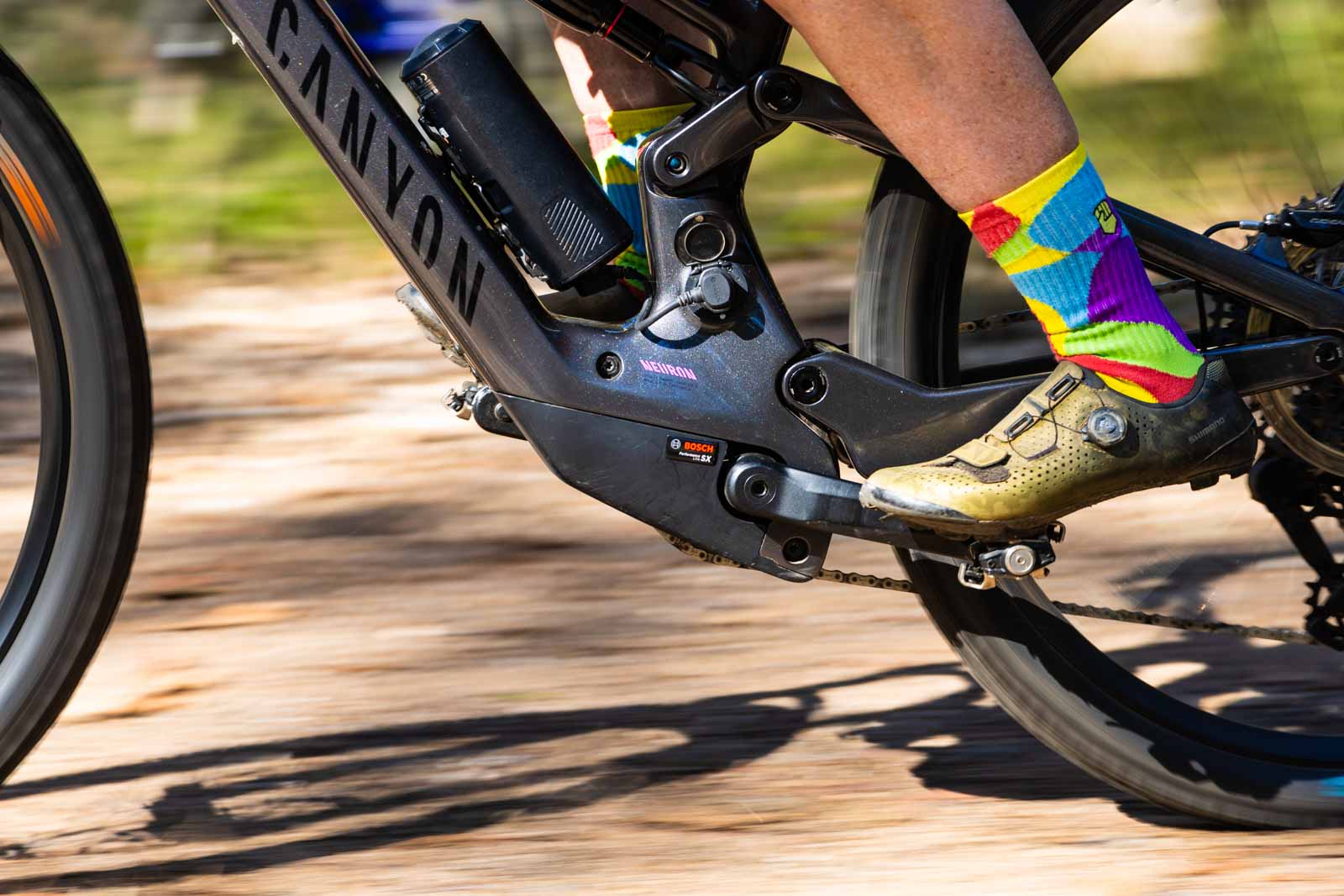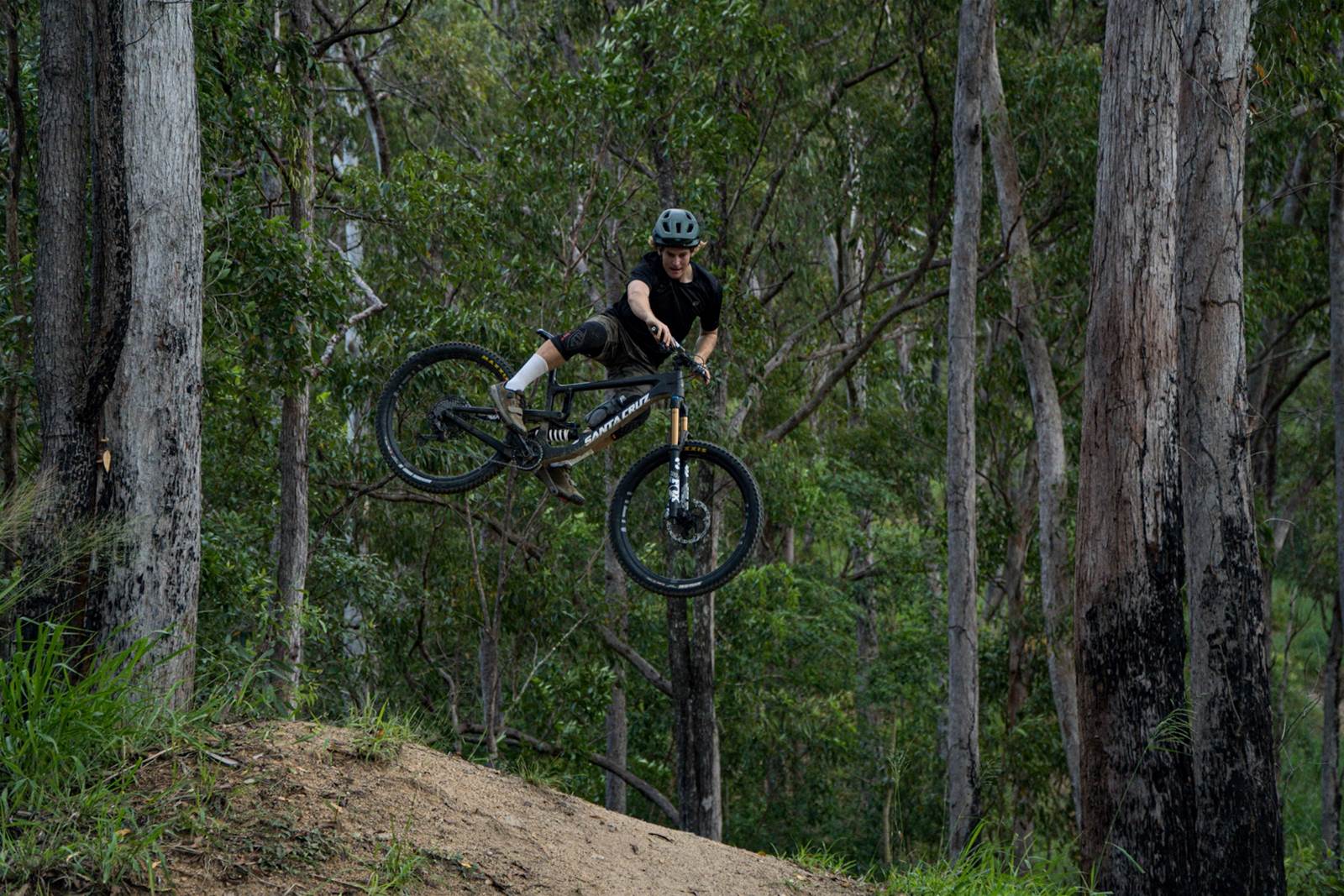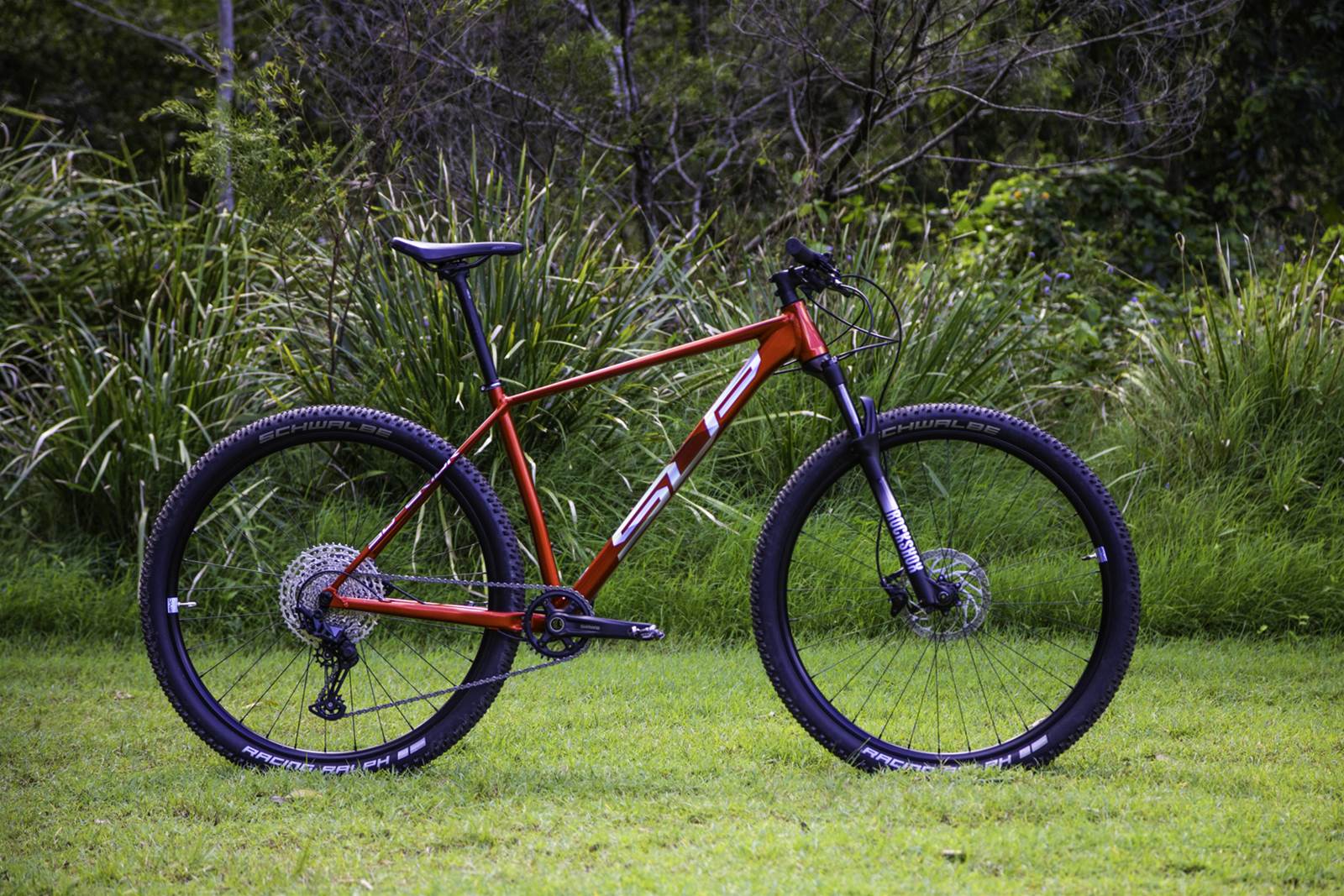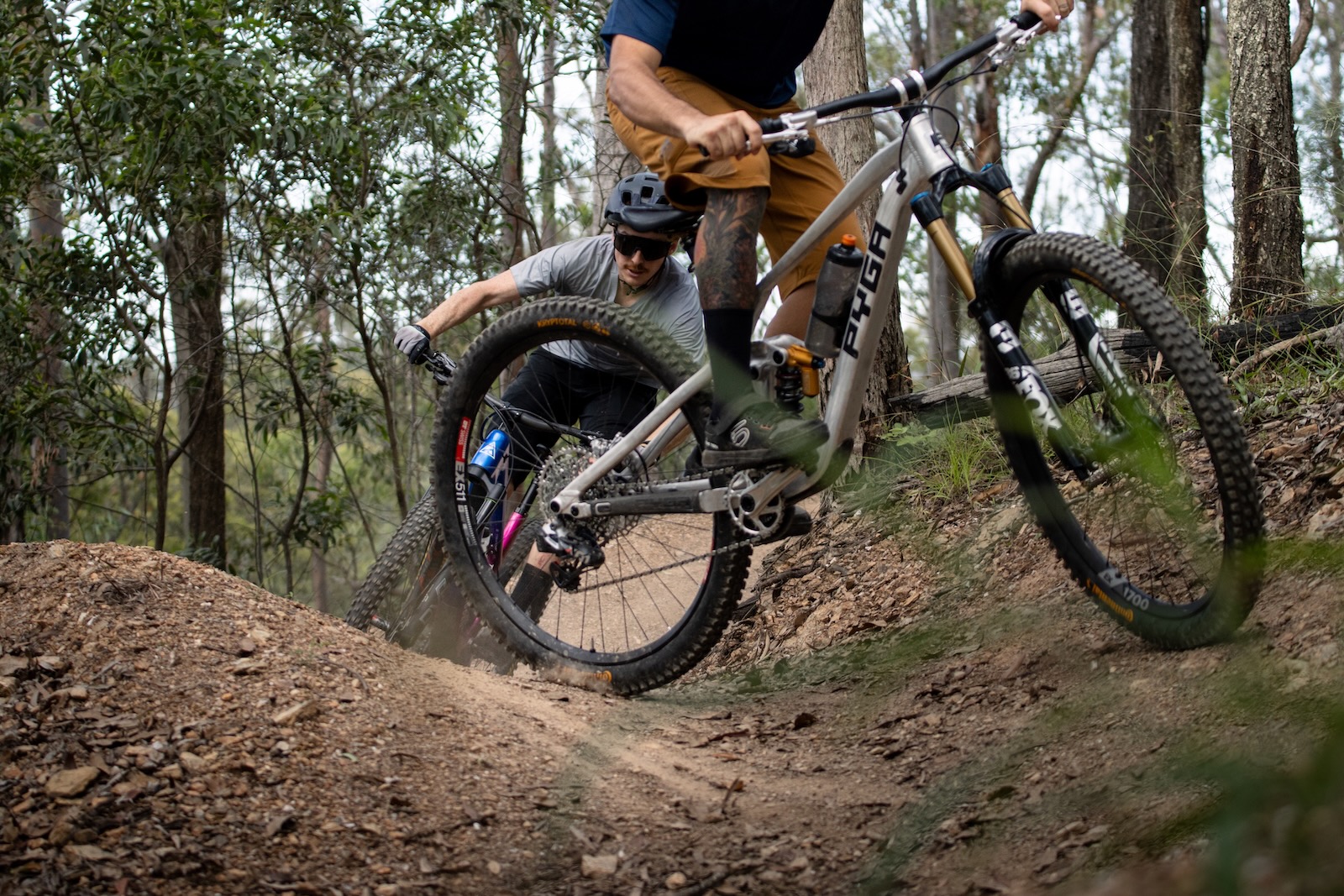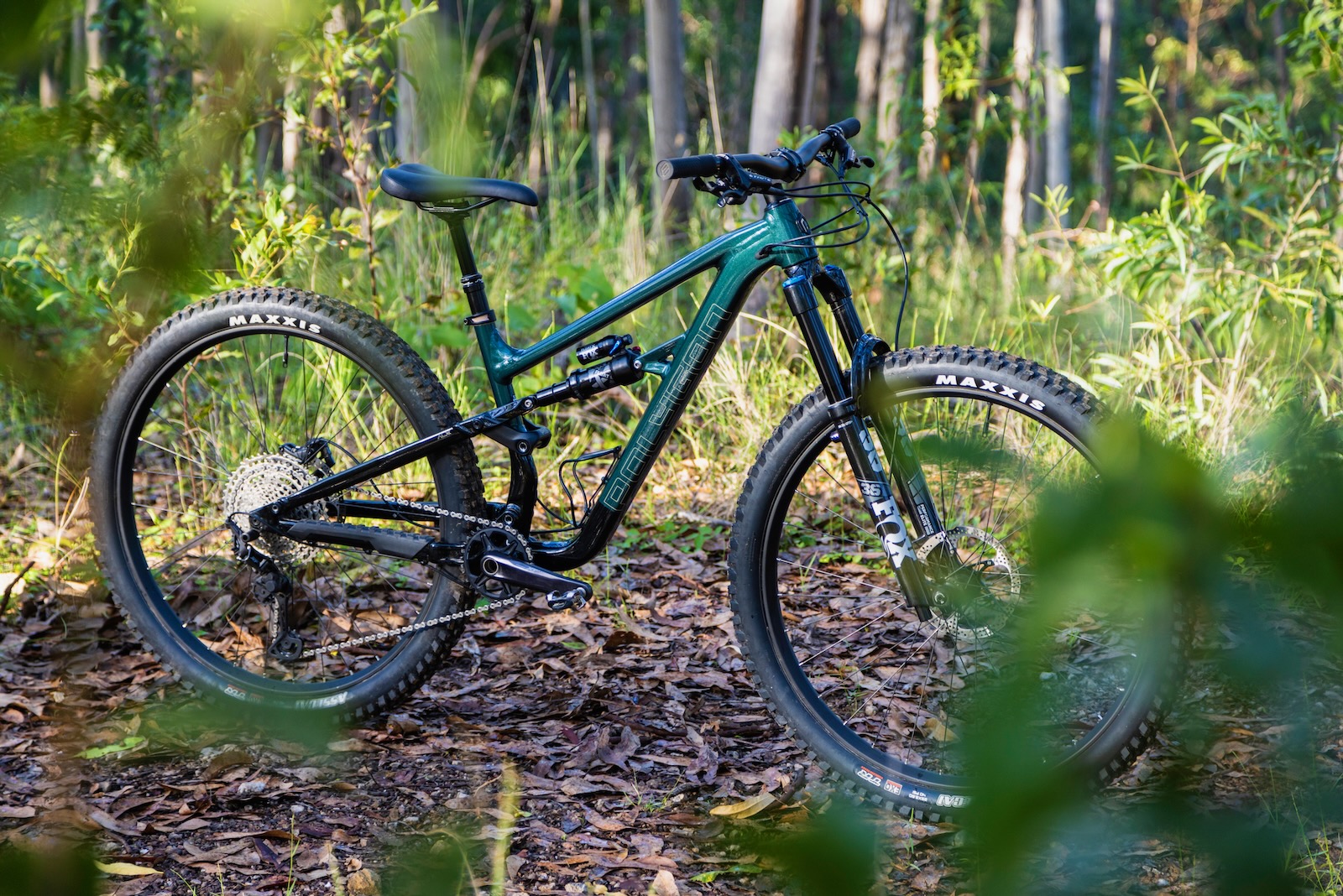TESTED: Yamaha YDX Moro 07 e-bike
Yamaha have jumped into the Australian e-bike market with a full power 27 Plus trail bike that is ready to rip.
Earlier this year I was invited to the launch of Yamaha’s YDX Moro 07 eMTB and subsequently had my very own test bike delivered to my house. My local dealer in Canberra is Team Moto and is one of Yamaha Australia’s 100+ dealers who were each given the choice on whether they wanted to stock the new eMTB and pending e-bike range. Technicians at those dealers have also been trained up on assembling and servicing the YDX.
While many of you will know Yamaha from their moto exploits and their e-bike motors, this is the first eMTB from them made available to the public in Australia, and sales will be via the Yamaha dealer network. The motor, frame and forks are backed by a fully transferrable three-year warranty, the battery is backed by a two-year warranty and the hydraulic suspension and other components have a one-year provision. All warranties are managed by Yamaha themselves no matter what the issue or item is. The transferable warranty is something a bit different to what we are used to seeing but is normal in the world of cars and motor bikes.
Time will tell if more brands will offer this, as a couple do already. Some things that stand out on the Yamaha over other eMTBs and mountain bikes in general is what they call their dual twin alloy frame, this dual twin area holds the 500Wh battery and keeps it away from the elements without hiding it in the frame where it can be prone to overheating. But this also removes any location for a water bottle. Perhaps the designers feel it’s not needed or that riders will use a hydration pack, because well, motor bikes don’t have bottle cages either.
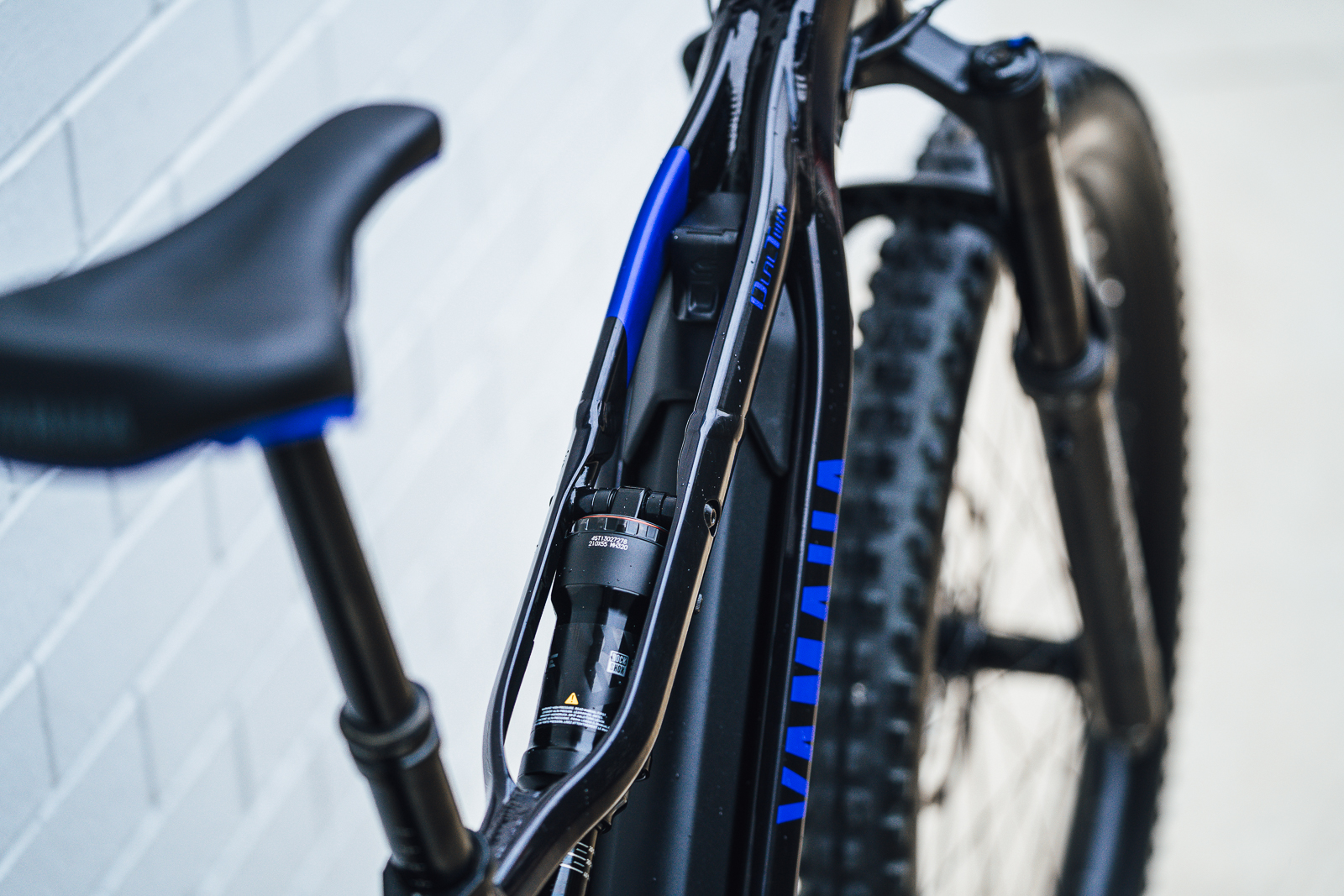
Tester: Ben Morrison
Riding Experience: Enough to raise a pair of cows.
Generally Rides: Pivot Firebird
Height: 177cm
Weight: 78kg
Bike Test Track: Tuggeranong Pines. Poo Pines, ANU Bike Park, Stromlo Forest Park and Majura Pines
Geometry and parts
I had a large test bike, and the YDX also comes in small and medium. In a size large the Yamaha tips the scales at 23kg, 3kg of which comes from the battery itself. The large has a 482mm reach with a 66.3 degree head angle and 70.3 degree actual seat angle. I found this was a great balance on the YDX, working with the ride of the 27 Plus wheel set. The chainstays are 464mm across all three sizes, which really helps keep the rear wheel sticking on climbs and aids in stability – although it is longer than what you would find on some of the eMTBs we have recently tested here at AMB.
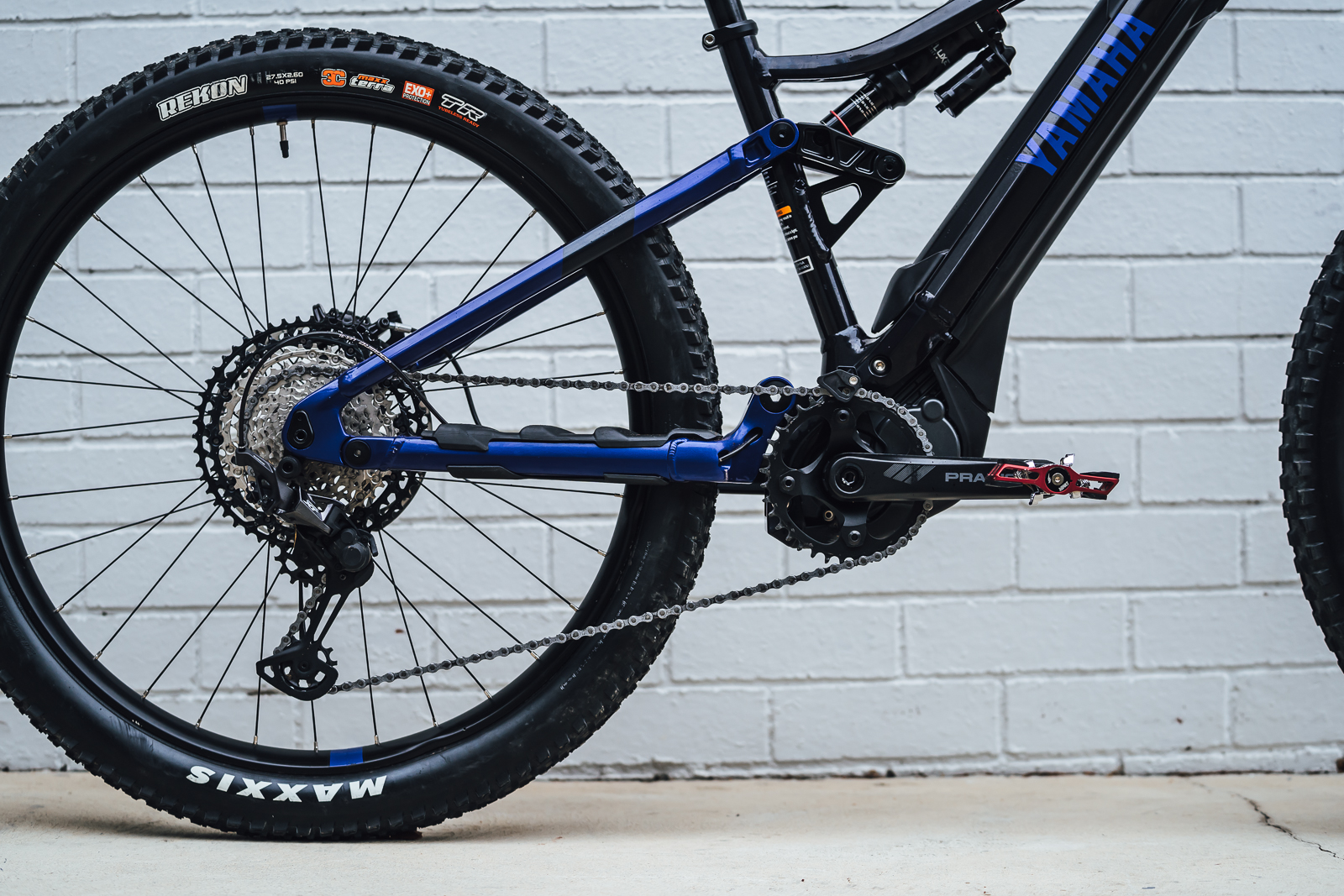
The suspension is handled by a RockShox Lyric delivering 160 millimetres of travel up front and a RockShox Superdeluxe Select+RT rear shock that delivers 150 millimetres of travel. Both are set up and ready to be used on an eMTB. Other things you will see are Magura MT5 brakes with nice big 203 millimetre rotors and a suite of Shimano parts helping you shift smoothly from the Shimano Deore XT 12-speed range. The wheels are alloy with 40mm internal, perfect to support the 2.6” Maxxis EXO+ tyres.
I do have to question why 27 Plus wheels and not 29” wheels were used, given 29” are very common these days especially when it comes to getting parts. However given Yakima are clearly targeting their existing customers via Yamaha dealers, I can see that a 27 Plus setup would suit those used to riding one of the bigger bikes from Yamaha. Yamaha did a good job with short 165 millimetre Praxis cranks to help eliminate pedal strikes. This is a big tick as you tend to find that the best way to get constant power delivery on any eMTB is to pedal often allowing the motor to feel like it needs to help you because the torque from your legs is not extremely high thus the motor thinks that you need assistance. A common mistake that people do is just jam their bike in the smallest gear and push hard on the motor, this makes the motor think you don't need power and you can do it all by yourself because of the amount of torque you're putting into it. This also means you are only using one gear and wearing that one out prematurely. If you talk to Josh Carlson, multiple eMTB National Champion, his hot tip for constant power delivery on an eMTB is “spin to win”.
A closer look at the Yamaha System
Originally Yamaha wanted to release these bikes earlier but decided to wait until 2023 once supply chain issues had ended. What this has done is mean that we skipped a few model variants and ended up with what is the most current Yamaha unit with the PW X3.
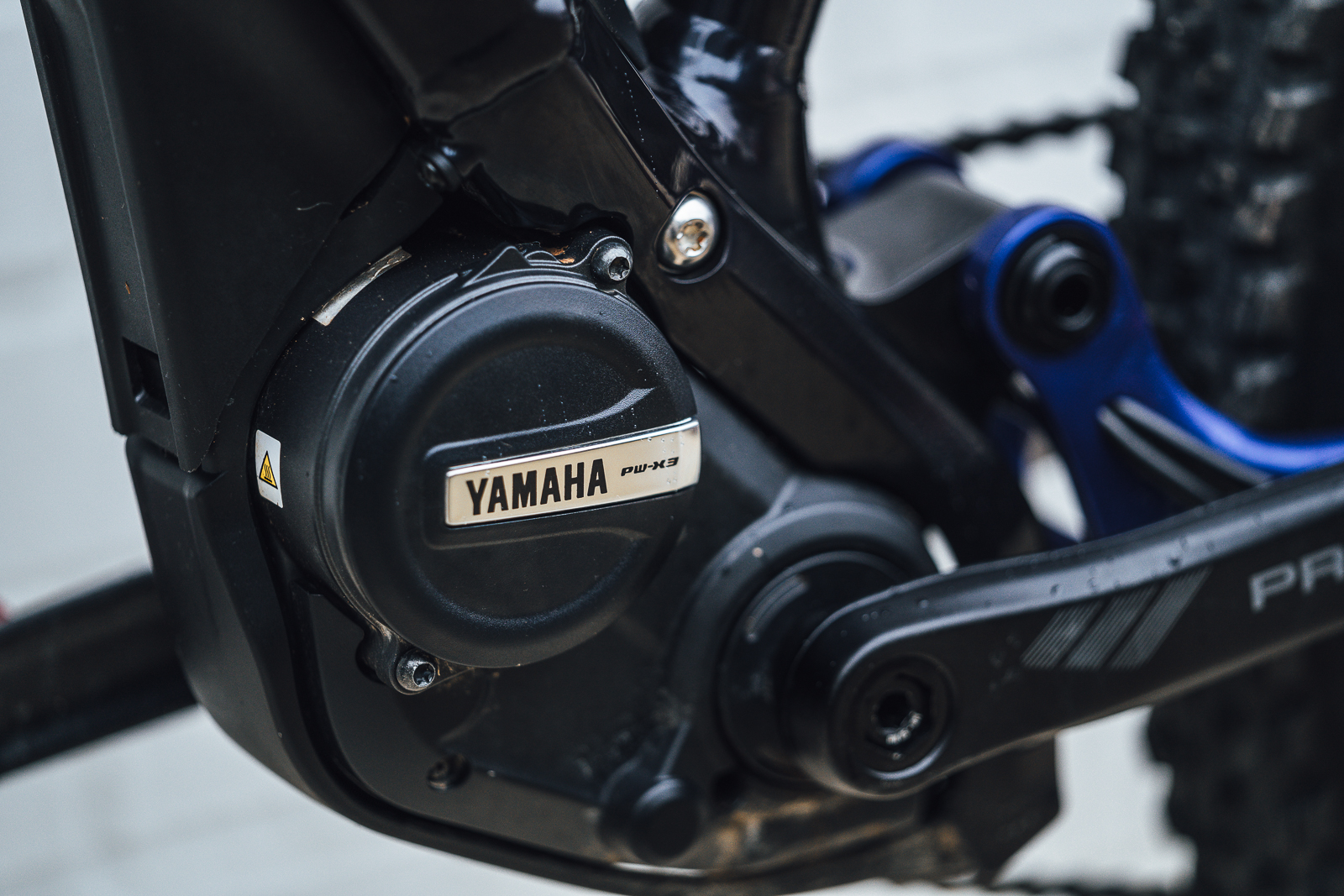
It has 85Nm of torque, and weights 2.75kg. Perhaps supply chain and waiting has been a good thing for Yamaha to release this bike in Australia, with the most up-to-date motor and head unit allowing us the best experience possible. Also, as with all eMTBs in Australia the Max speed assistance is 25 kilometres per hour. Yamaha have a 500Wh battery for the system that is cradled between the frame tubes for easy cooling and protection.
Getting your head around Yamaha 's Interface X is extremely easy. You get an intuitive thumb shifter that just sits next to your grip on the left-hand side and an easy-to-read screen with coloured LEDs that is next to your stem, letting you know where you are in your preferred mode and battery level. There are five based modes available, +ECO, ECO, STD, HIGH and EXPW. EXPW is pretty cool in that it helps smooth out your pedal stroke, giving more assistance over the top of the pedal stroke which is normally a dead spot, and a little less at the strongest point. The result is very smooth power delivery. Given the assistance has such fast pick up as well, it makes for a responsive system that isn't abrupt – which is a nice combination.
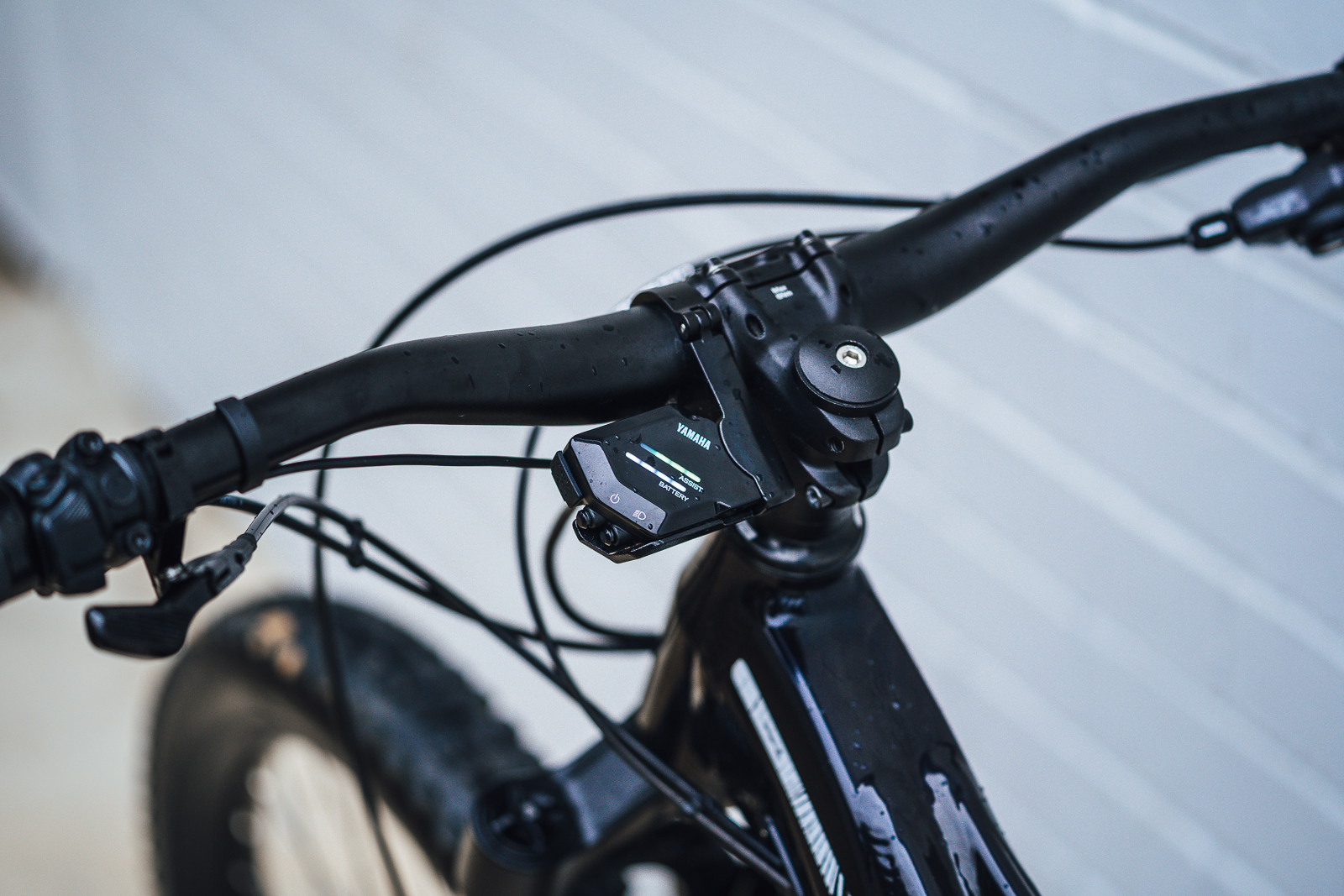
In addition to this, you can also select to have an automatic mode, which changes the output between ECO, STD and HIGH based on the terrain you are on. The benefit here is that you will get more range from the battery. It's great for mixed trail conditions, but if you're pointing straight up a long climbing trail you'd likely be best to stick on to Yamaha's max power mountain bike mode.
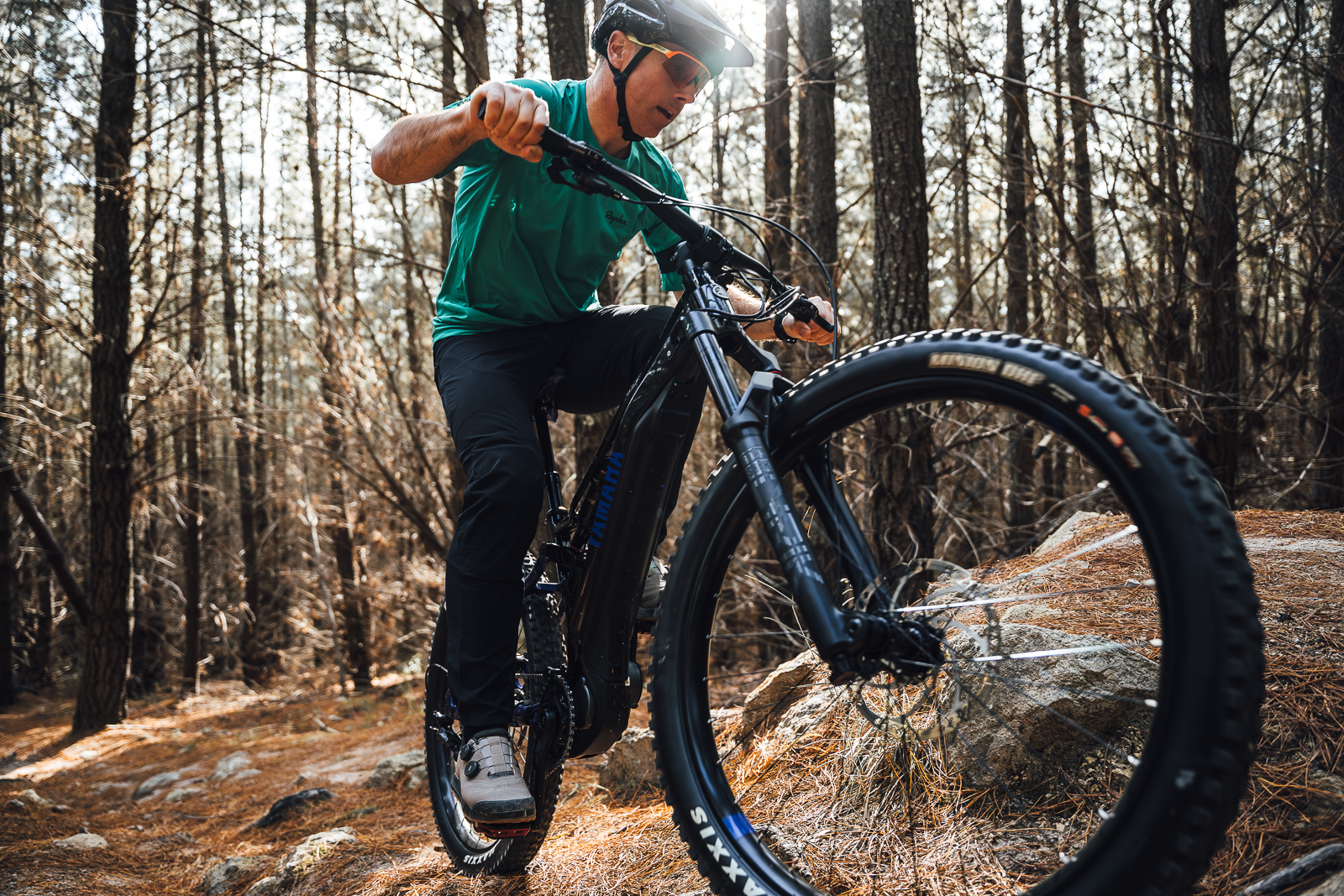
Something a lot of the big brands are doing now well is power delivery that feels very natural, and Yamaha have nailed this in their EXPW max power mountain bike mode that is signified by yellow LEDs. While I do encourage you to play with all modes to work out the one that suits you best, I think like me most users will find yellow or max power mountain bike mode the best mode 90% of the time. There are even times where I would ride with that mode in a three-quarter power mode when climbing or in technical sections of trail and I didn't need the full boost of the motor. Something that this motor doesn't do is just jam power to the rear wheel, it has a very smooth transition which does mean you can leave it on full power most of the time with the other 10% maybe dropping it back a bit in order to save some of the battery power which is generally why I would reduce the power delivery, otherwise it was very easy to ride on full power mode.
On the trail
At 23 kilos the Yamaha rides much lighter than it is, even if it does have very conservative geometry when it comes to head angle and seat tube but perhaps this is a good thing when you think about the intended rider; not everybody needs a super long top tube, slack head tube and steep seat tube. The conservative geometry is probably where the idea around Plus size wheels came from. While the Yamaha itself is very playful and easy to get along with on the trails the Plus size tyres do give a large element of confidence when it comes to cornering at lower speeds and does give you that very planted feel you get from a motorbike. Really at no point during my rides did I ever wish for 29” wheels.
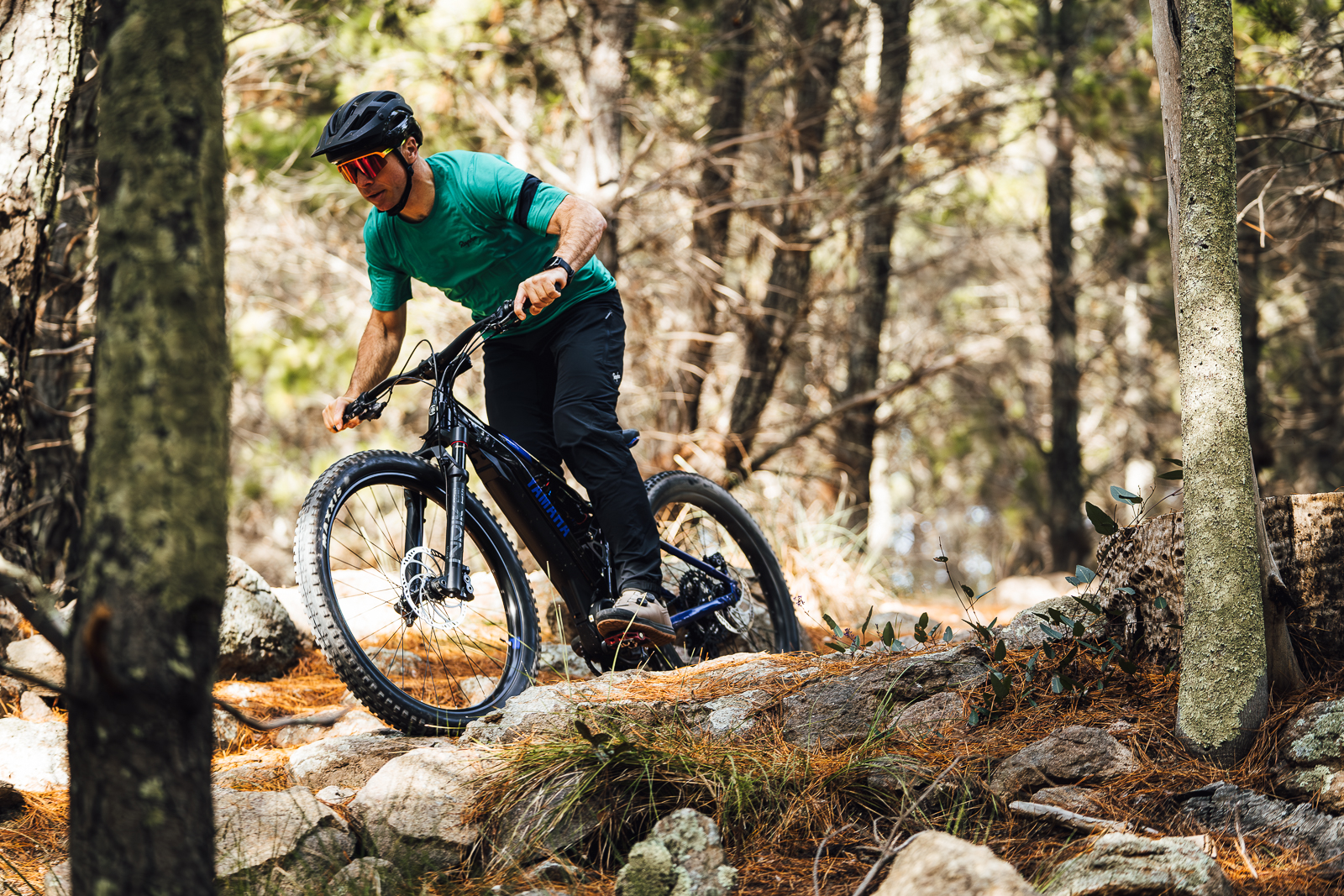
I found the Yamaha to be extremely fun and playful bike to ride and balanced in the air. Originally at the launch day I said I wanted to take the Yamaha on some rockier trails and see how it went knowing that the suspension on this bike and the suspension design are all proven and work well together. It came as no surprise that the Yamaha gobbled up rock gardens with its 160/150 of millimetres travel and great suspension. Some of the most fun had on the Yamaha was climbing up flowing technical trails where the motor could do its thing and make you feel like you are super fit and strong. What's the point of an eMTB if it doesn't make climbing fun?
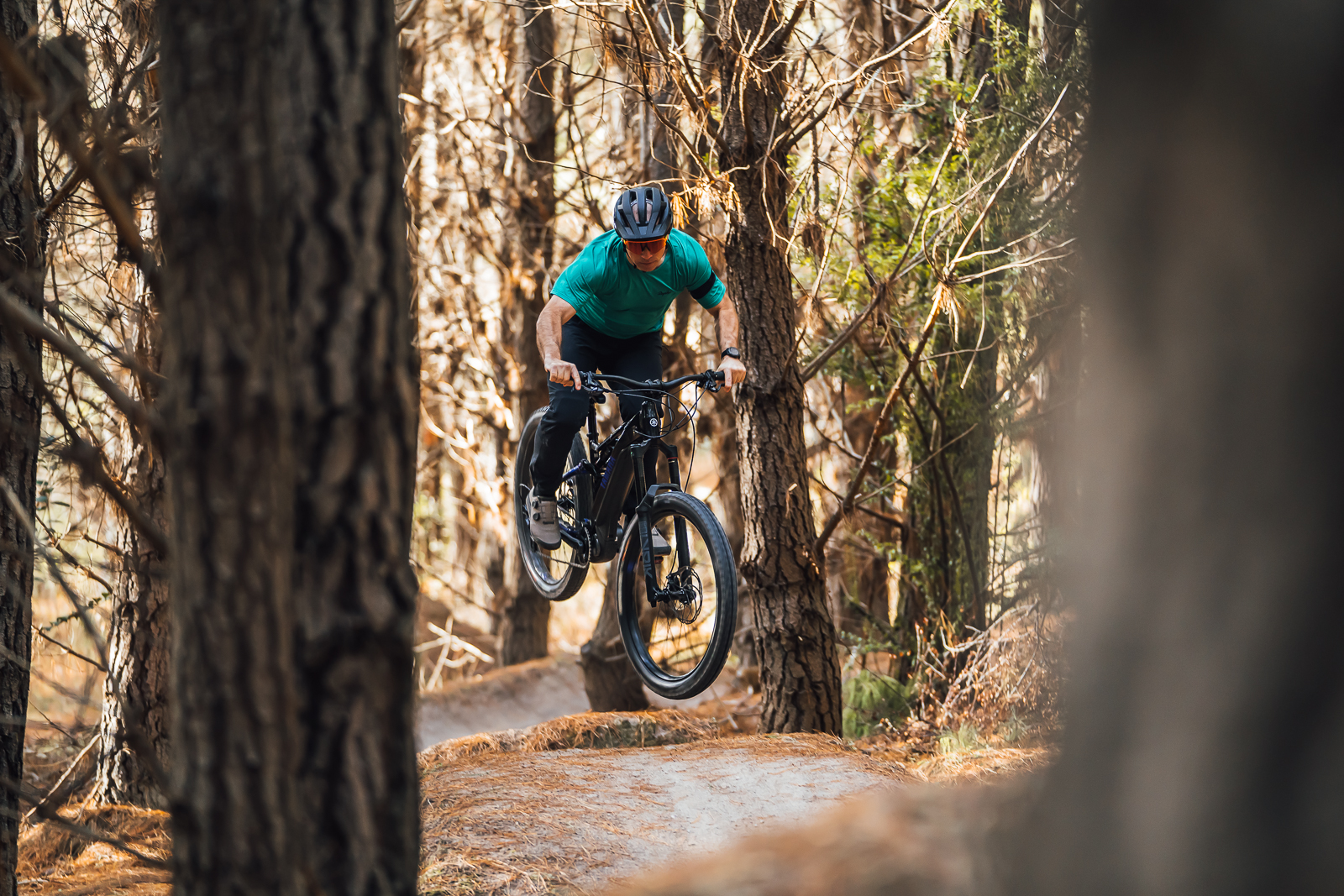
Interestingly it was perhaps the Plus size wheels that offer some of the great ride qualities of the Yamaha. The extended grip they offer with the large contact patch and the way that the big tyres eliminate small amounts of trail feedback is something that is unique, and I am sure no rider that owns a Yamaha would want to do without. You do however have the option of fitting a standard 27.5” tyre to your Yamaha if you want to try something a bit more traditional and reduce the weight of your bike a bit. This could perhaps be something you look at as an upgrade because brands such as Pirelli, Michelin and Maxxis offer a great range of eMTB specific tyres in the 27.5” size.
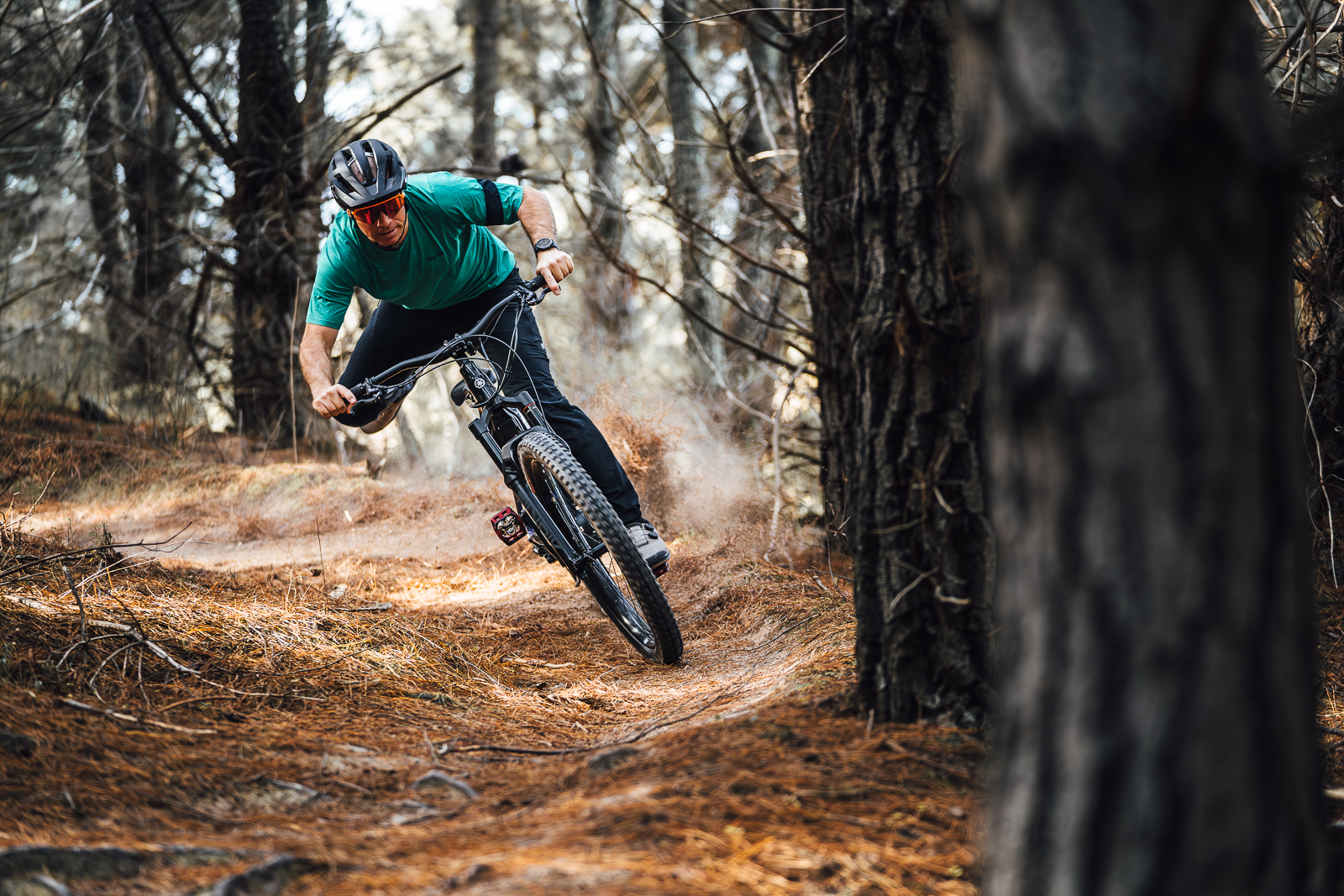
Riding the YDX and using the modes to suit the terrain is perhaps the only way you are going to get the highest possible range out of the 500Wh battery, along with using the bike on reasonably smooth or flat trails with lower power eco modes. In an effort to push the battery and range to its limits I took the Yamaha to Stromlo Forest Park where I attempted to ride every trail at least once in a single session. In doing this I used the max power mountain bike mode in varying power ranges from 50% to 100% and often switching the battery off or two the eco mode one long descent. Over the course of the day, I managed to cover about 75% to 80% of the trails including one very steep fire road climb which likely took a toll on the battery itself because I was sitting on maximum speed and power for about 3 minutes.
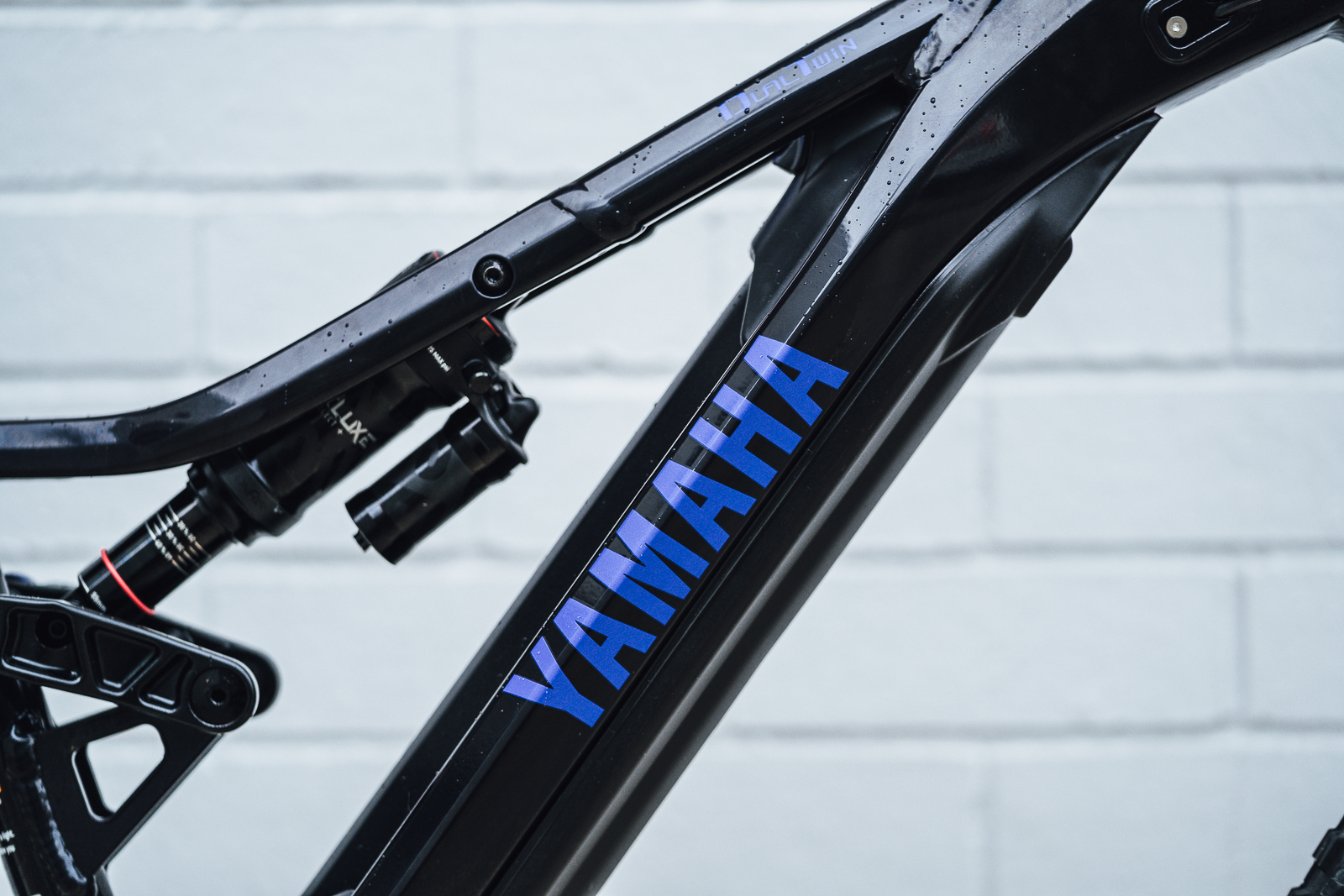
I have done this same experiment on more than one occasion with different results removing the steep fire road climb which was more just to give the motor a good push and was a shortcut to other trails. As well as doing trails in a different order and leaving the battery on the same mode descending when I finished the climb. The result was often around the same amount of time before the battery went flat (always on a climb hahaha) but different amounts of trails covered. On average the 500 Watt hour battery got me 1.5 hours to 1 hour and 45 min of use. So about 10 to 15 minutes difference between the average times I experienced but it did often mean the difference between one two more runs. I would really like to see a bigger battery on the Yamaha so you could be more creative with the length of your ride and Power Distribution, this would however come at a weight penalty and likely impact the handling Yamaha.
Something Yamaha have done well with their new PW-X3 motor is reduced the outward noise you hear when it is pushing hard and delivery power. There has been a lot of feedback driven by the public and test riders like Brian Lopes on how loud a lot of these motors have become and the introduction of the mid power motors has really made manufacturers look and address this because they are so quiet, and the reduced drive noise does make for a much more natural and pleasant ride.
Our take
The Yamaha is always going to turn heads due to its unique look and the fact it is a Yamaha. There are lots of well thought out features on this bike which include low standover height, the ability to run a really long dropper a post if you require and a super easy to reach charge port located near the headt ube on top of the frame. Yamaha also chose to use a Horst link design for their suspension which is well proven on bikes the world over. Yamaha did their research when it came to the parts people might want especially when you look at the price of $8999 it is a great first offering in Australia from the team at Yamaha, with a high quality motor with some excellent software to get a lot out of it on the trails. I expected to feel limited by the 500Wh battery and the 27 Plus wheels, but smart design by Yamaha has made this combination just part of a very fun eMTB to ride.
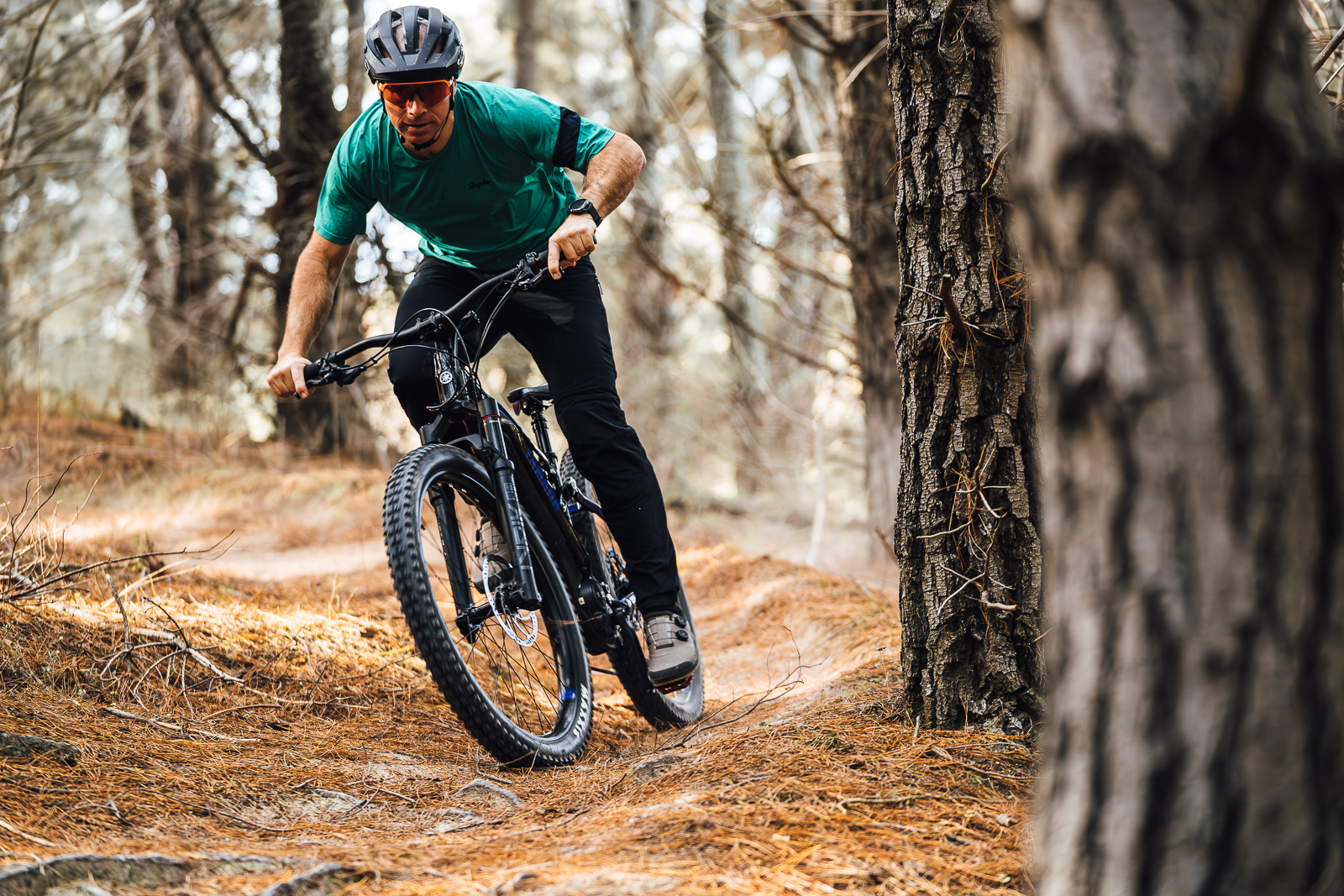
Yamaha YDX Moro 07
$8,999.00
Weight 23.3kg (as tested)
From Yamaha
Available Sizes Small, Medium, Large
Frame Material Alloy
Fork RockShox Lyrick Select RC, 160 mm travel, 37 mm offset
Shock RockShox Super Deluxe Select+ RT Debonair, Yamaha tuning, 150mm travel
Motor Yamaha PW-X3, 500W max, 85Nm
Contoller Yamaha Interface X
Battery Yamaha 500Wh
Shifter Shimano XT M8100 12sp
Derailleur Shimano XT M8100 12sp
Crank Praxis AL6000 w/bolts 165 mm
Chain KMC e12 TURBO EPT 12-speed
Cassette Shimano XT M8100 12sp, 10-51
Hubs Yamaha seal bearing
Spokes Steel
Rims Yamaha 27.5 with 40mm internal
Tyres F: Minion DHF EXO+ 3C MaxxTerra 27.5×2.6”
R: Rekon EXO+ 3C MaxxTerra 27.5×2.6”
Brakes Magura MT5, 203/203mm
Stem Alloy, 40mm length, 35mm clamp
Handlebars Alloy 780 mm wide, 35mm clamp, 30mm rise
Seatpost Alloy 30.9 mm dia. dropper post, 170 mm (L)
Saddle Yamaha Off-Road Cro-Mo Rail, anti-slip

